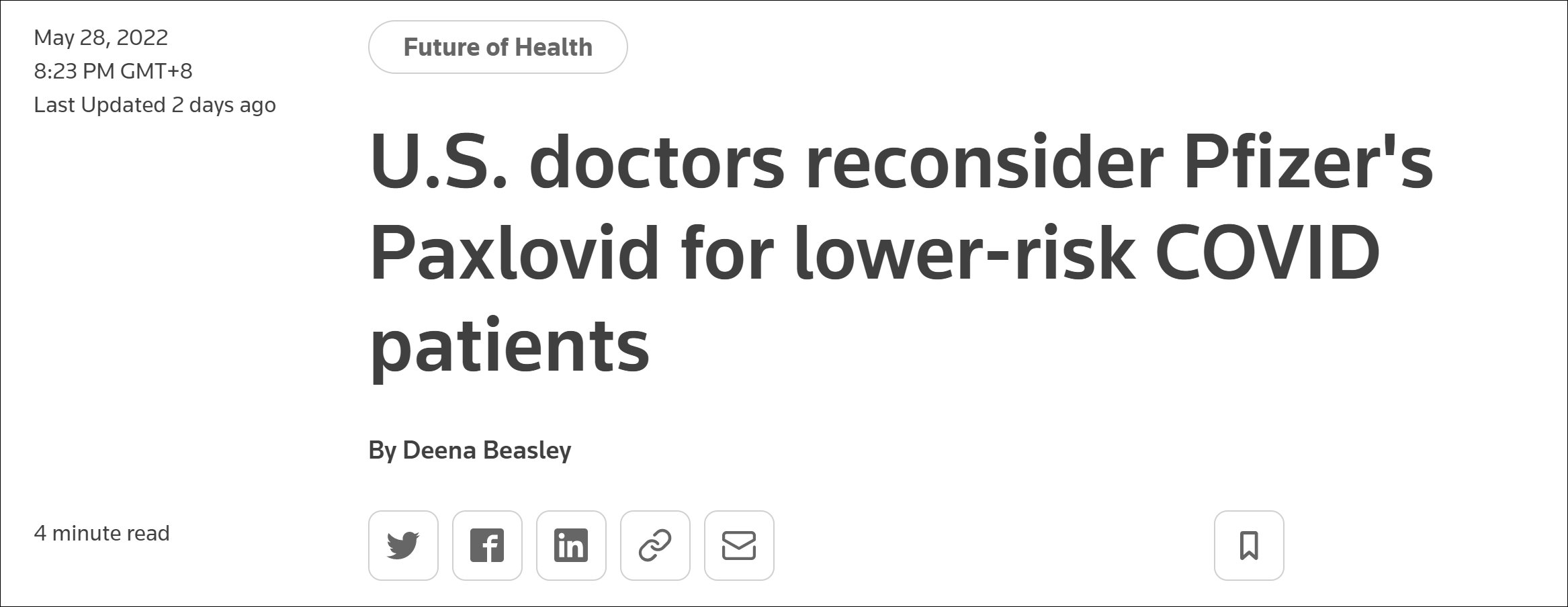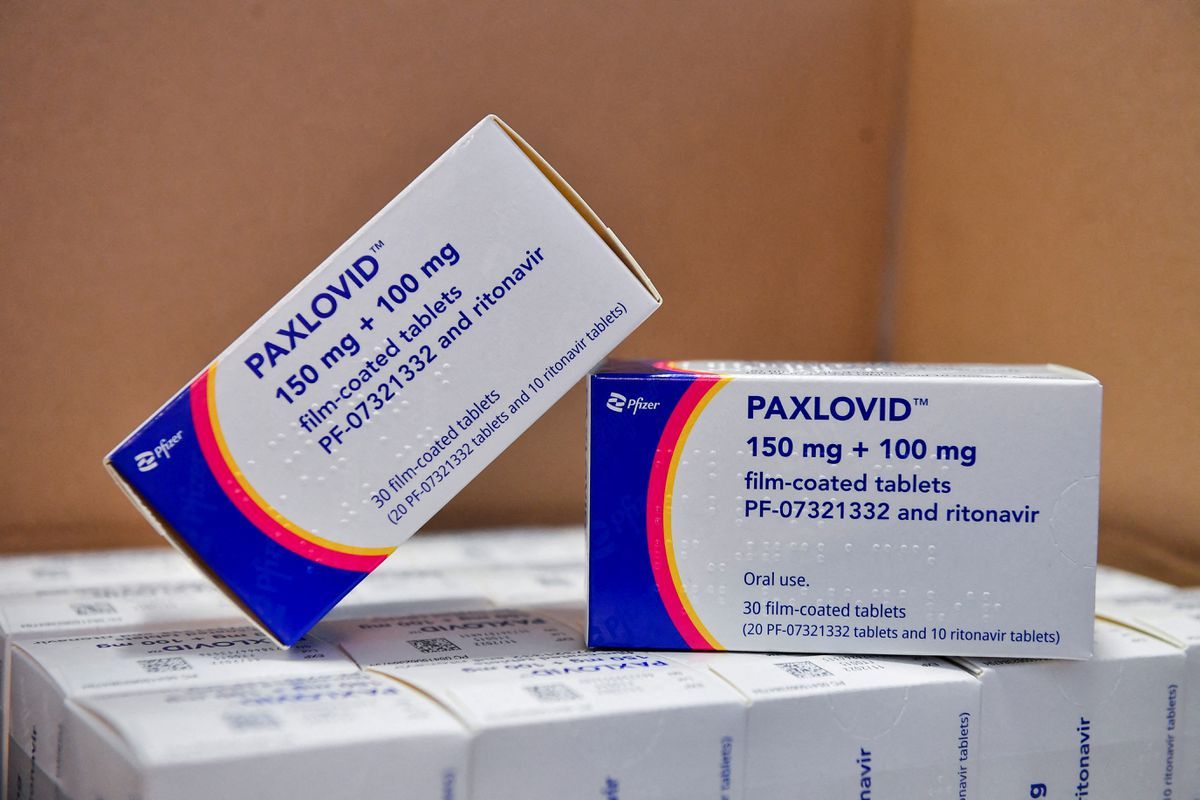(Observer Network News) Some patients with new crowns in the United States have relapsed symptoms after taking a course of Paxlovid, and the US Centers for Disease Control and Prevention recommends that such patients be re-isolated for 5 days. Doctors in the United States advise against using Paxlovid in low-risk patients.

Reuters screenshot
Paxlovid was authorized in the United States in December last year to treat people at high risk for new infections with the new coronavirus to prevent severe illness; as the number of infections has increased, Paxlovid use has skyrocketed. More than 162,000 courses of Paxlovid were prescribed in the U.S. last week, up from an average of 33,000 a week before that, according to U.S. government data.
According to a Reuters report on the 28th, Paxlovid was purchased by the U.S. government and provided to patients for free, and Biden administration officials have pushed for widespread use of the drug. But as usage increased, more and more U.S. COVID-19 patients reported that although symptoms eased after taking Paxlovid, symptoms reappeared after completing the five-day course of treatment.
On the 24th local time, the U.S. Centers for Disease Control and Prevention said it recommended that patients taking Paxlovid should be re-isolated for five days if their symptoms rebounded due to concerns that patients who relapsed could spread the virus.
In this regard, Sandra Kemmerly, an infectious disease expert at Ochsner Health in New Orleans, USA, said that people do not like to isolate for longer. “For those who have no real risk … I Advise them not to take it (Paxlovid).”
Bruce Farber, head of public health and epidemiology at Northwell Health, said: “I would be reluctant to give it (Paxlovid) to people who are very low risk and not seriously ill. Patients, especially those who have been vaccinated and have had a booster shot.” But he also said that Paxlovid is still recommended for patients with serious health problems or over the age of 75.
Farber estimates that Paxlovid-related relapses are now about 10 percent of patients, up from 3-4 percent when Pfizer conducted the trial.

Paxlovid Source: Reuters
Paxlovid’s emergency authorization reportedly says the drug can only be used in newly infected people with risk factors, but doctors say many others also use it.
“We get a lot of requests from people who may be traveling and want to take Paxlovid just in case,” said Tara Vijayan, an infectious disease specialist at UCLA Health. Just in case.”
In response, Pfizer said in an email that it was monitoring the data and believed the increase in viral load was unusual but not necessarily related to Paxlovid, according to Reuters. “To date, we have not seen drug resistance in patients treated with Paxlovid,” a spokesman said.
The CDC also said it was unclear whether the patient’s relapse was related to Paxlovid, or just a case of the natural progression of the new coronavirus.
Vijayan said, “This has been the case with the new coronavirus in the past, patients get better and worse the next day, but I can say that we have not seen a recurrence of symptoms in patients treated with other treatments.”
Earl Strum, medical director of staff health at Keck Medicine of USC, said that patients with relapses often have very mild symptoms.
According to Reuters, some have questioned how effective Paxlovid will be given the large number of people in the United States who have been vaccinated and have been infected with the new coronavirus.
In this regard, Temple University (Temple University) infectious disease expert Jason Gallagher (Jason Gallagher) said the rebound did not reduce the utility of Paxlovid. “It prevents you from being hospitalized … if you get symptoms after you stop taking it, that’s bad, but overall it’s a success,” he said.
This article is an exclusive manuscript of Observer.com and may not be reproduced without authorization.